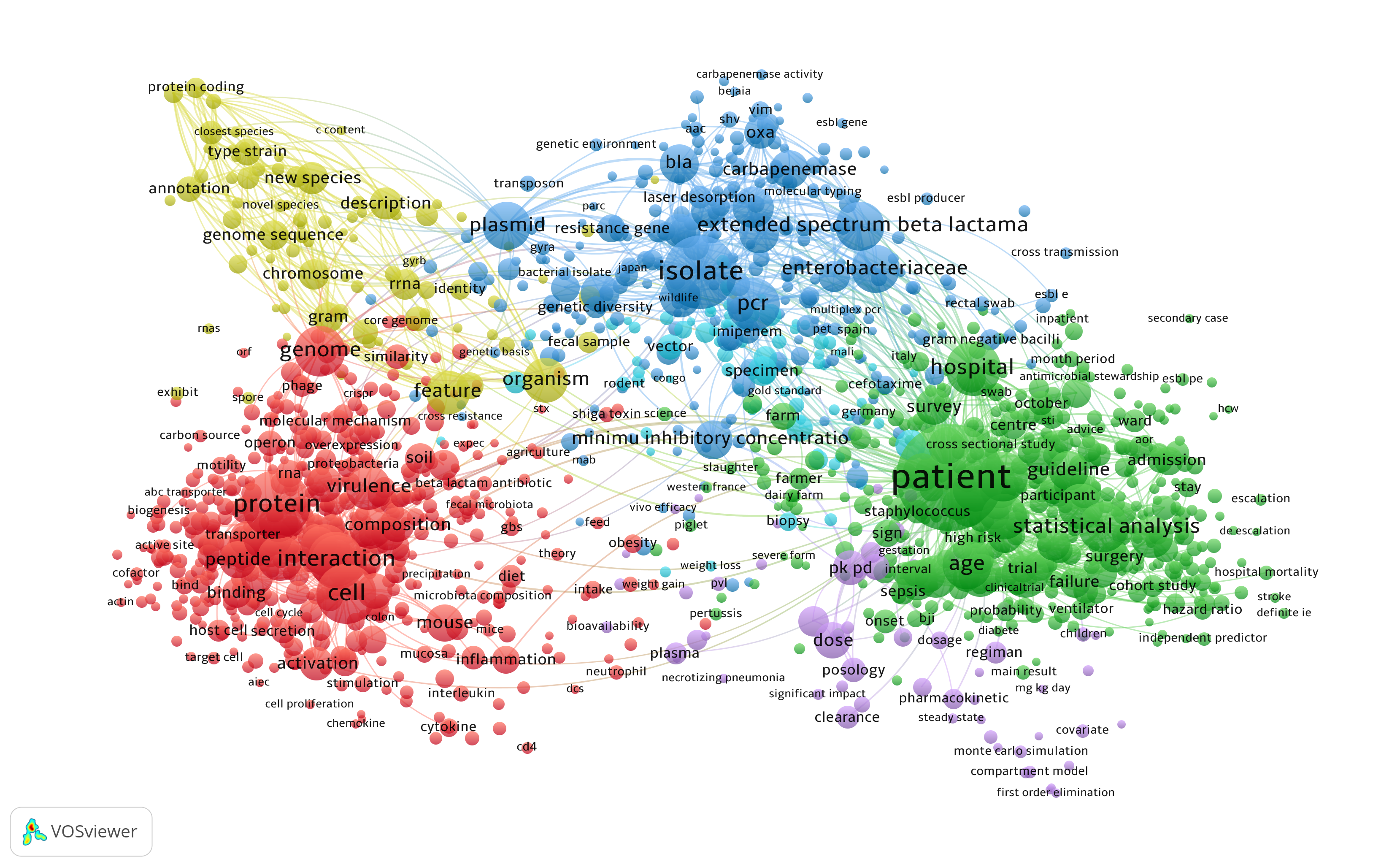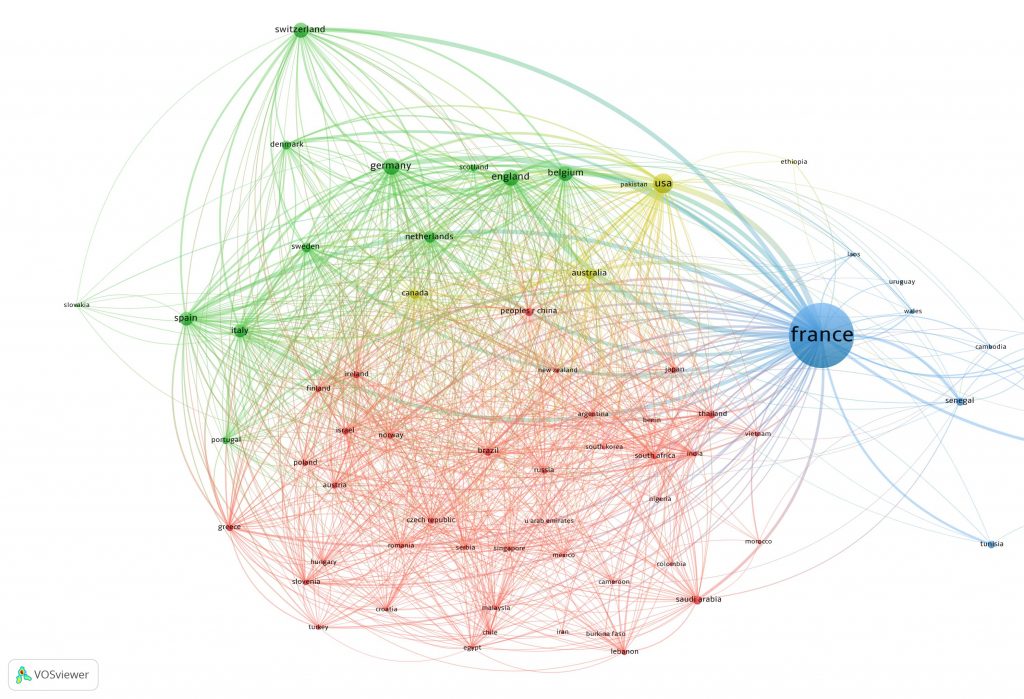Relationship mapping using keywords
This mapping reflects the subdisciplines most studied in France and renowned internationally. The analysis reveals a trend towards five main research themes on antibiotic resistance in France:
- molecular and cellular mechanisms (red),
- genome and genetics (light green),
- bacterial strains including those that are resistant and recommended for study by WHO (blue),
- treatment in the hospital or community settings (green),
- pharmacokinetics studies and treatments (mauve).
Click or hover to zoom into part of the map. You can also use the mouse scroll wheel or, if on a touchscreen, spread your fingers to zoom in and out.

French collaborations with other countries in Europe and worldwide
Analysis of France’s contribution via its research publication activity over the 2013-2019 period reveals that 43.3% of the publications results from collaborations with other countries in Europe and/or worldwide. There is a particularly strong network of collaboration with the USA, UK, Germany, Switzerland and Spain, and the grouping of several European countries (green cluster) shows that French teams are participating in European consortia.
Click or hover to zoom into part of the map. You can also use the mouse scroll wheel or, if on a touchscreen, spread your fingers to zoom in and out.
